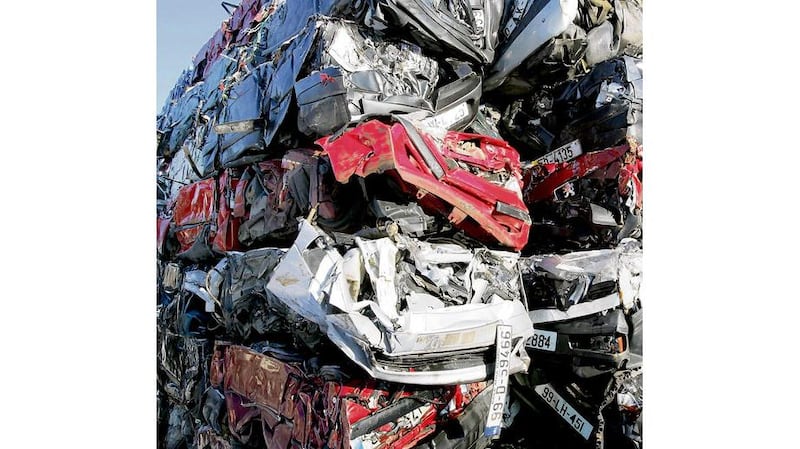Even with the scrappage scheme providing incentives, do you really need to shift your old motor? KYLE FORTUNEconsiders the options
ITS NICE having a new car, and now theres an incentive to do so, with the Government offering up to €1,500 of tax relief.
Given the likely retained value of your old banger, it could double its potential worth when you trade it in, making scrappage seem like a great idea.

There are plenty of arguments for and against; some people are perhaps rightly appalled that perfectly serviceable cars will be crushed for no other reason than a tax incentive.
The green angle is worth considering too, as despite the scheme only applying to cars bought with emissions of 140g/km or less, taking a car off the road thats in perfect working order to replace it with a car thats just been built – with all the CO2 involved in that process – isnt necessarily good for the environment.
Where the scrappage scheme does make sense is in consumers’ wallets. In the year 2000, the Celtic Tiger was living the life with its spend, spend, spend attitude and car sales reflected that – with a record 225,267 sold. With just 57,460 sold in 2009, it’s hardly surprising the Government wants to kick start the car market once more.
With 225,267 possible scrappage cars available from 2000 alone there’s plenty of potential for the scheme and no doubt there’ll be lots of takers. Why wouldn’t you? The difference between a new car and a 10-year-old one is very marked indeed.
If there’s one argument for scrappage that’s impossible to deny, it’s the increased safety, economy, comfort and refinement of vehicles today compared to 10 years ago.
Taking a typical Irish market bestseller in the years up to 2000 would mean looking at something like Toyota’s Carina E and its Avensis replacement. Ireland’s most popular cars now? The Ford Focus and Volkswagen’s Golf. On paper the older Toyotas might be considered a bigger car, but the growth through classes now sees C-segment cars like the Focus and Golf offer space to easily match and better cars in the “larger” D segment years ago.
Get in a 10-year-old Avensis today and it’ll feel no more spacious than a Focus or a Golf. The only dimension the Avensis is bigger than the Ford in is length – the “smaller” car being just 200mm shorter.
Inside you won’t notice, though the difference in material quality, cabin layout and specification will be tangible – in favour of the Ford.
Competition is a good thing and expectations from new cars are higher than ever. That’s driven manufacturers to load up specifications to the point where even mundane machines can match the specifications of more expensive cars, 10 years back. That’s no more evident than when looking at the safety equipment.
The Avensis came with decent levels of passive safety – boasting driver and passenger airbags as standard in 2000, but you’d have to pay for side airbags in anything other than the top of the range Sol models.
Driving aids like anti-lock brakes with Electronic Brake-force Distribution (EBD) were standard fit on the Avensis, but again if you wanted stability or traction control, you’d have to pick the range-topping car.
Looking at the specification for Volkswagen’s Golf entry-level Trendline model today reveals huge improvements in standard safety kit. It comes with Electronic Stability Programme (ESP), incorporating ABS, EDS and ASR (traction control) as standard. Start counting airbags and the safety increases are even more apparent, with the Golf featuring driver and passenger front and side airbags, a driver’s knee airbag, and curtain airbags for front and rear passengers.
Factor in seatbelt warnings systems, pre-tensioners, whiplash optimised seating, Isofix child seat anchor points and ever more rigorous crash testing and the case for scrappage is tough to deny if you’re transporting your family.
Euro NCAP gave the 1998 Avensis a three-star crash test rating compared to the Focus and Golf’s five-star scores (with far tougher tests), the modern cars protecting pedestrians and child occupants better too.
If the safety argument isn’t strong enough then the case for the environmental is difficult to ignore. To qualify for scrappage, both the Golf and Focus will have to be bought in their smallest engine guises, the Golf’s 1.6-litre turbodiesel in 90-, 105- or 140PS producing between 118 and 126g/km and returning 4.5-4.8l/100km – the super eco BlueMotion model managing 99g/km and 3.8l/100km. Look at the Focus’ specifications and you’ll achieve similar.
And the 10-year-old Avensis? The 2-litre turbodiesel achieved 5.8l/100km and CO2 emissions of 174g/km, the smallest petrol engine matching that 174g/km but only achieving 7.1l/100km on the official combined cycle.
Still not convinced? Start trawling through the standard equipment of new cars today and you might just change your mind. Ten years is a long time in the car world.











